Dear Friends and Partners,
After pulling up to the pump I slid my credit card in the slot for a quick scan, and after the prompt picked my poison. Eighty-five octane with E10. Ten percent ethanol.
It’s ubiquitous these days, that pesky ethanol. It comes from corn, ironically now being produced at a greater expense than the petrol it is paired with (although at what unseen long-range cost is fracking?). In addition, my fuel economy is compromised by it, particularly because our aging vehicles are not flex-fuel designed.
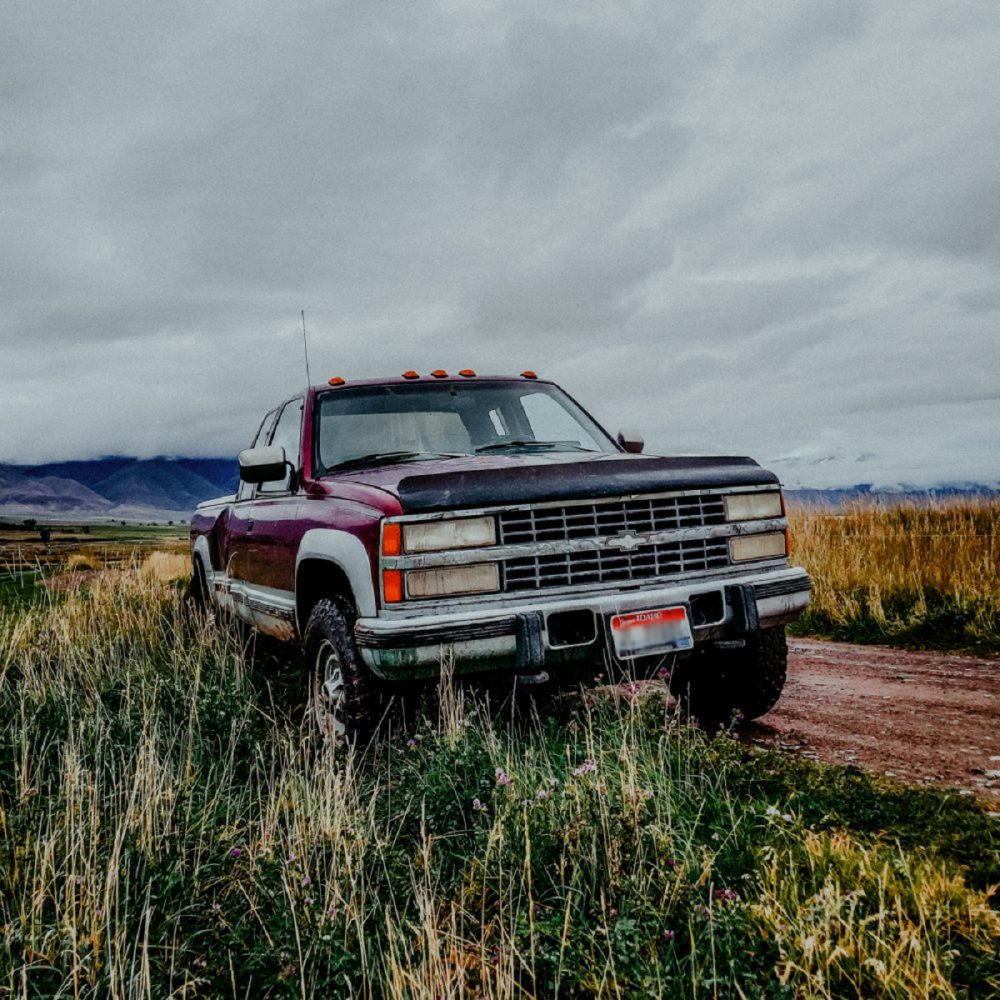
As I finished up my filling and headed back to the ranch from Salmon, Idaho, I thought about the linkage between the beef in our local Safeway and that gas pump. Or the beef in any supermarket for that matter. Even Whole Foods.
A few weeks prior: Whole foods. Salt Lake City. Downtown. Hopelessly drawn to the meat case, I find myself eyeing some quite remarkable ribeyes. Caryl looks at me askance as I make my way back there. She knows I am up to no good. It’s no good for WF, but potentially good for their patrons. Maybe if we keep embarrassing them, they’ll step up to the plate (I do like those puns).
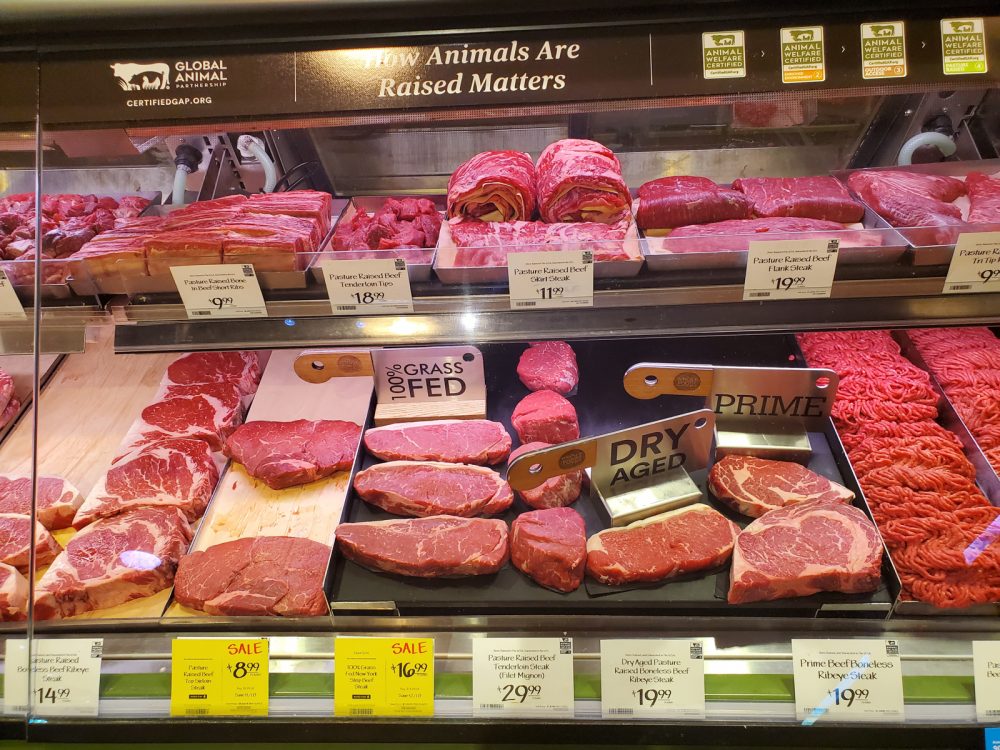
Probably not. Too much at stake (steak?), I think, economically for them.
Those steaks readily grade high choice; perhaps they even go prime. Teardrops of whitish fine marbled fat speckle demonstrably through the midsection, the Longissimus dorsi area of each thick cut steak. I’m envious. If these are grass fed, they sure look lovely. We raise steaks like this but would never conceivably have the economic and supply bandwidth to market them in boxed quantity to the likes of Whole Foods. We are relatively small ranchers, particularly as compared to the juggernaut of Big Beef’s numbers in the tens of millions of animals.
Especially at this price. They’re on sale today: $16.99. The case convinces me that they are raised in a truly regenerative manner through many sign banners that cry out words like “Local! Grass Fed! Global Animal Partnership certified!”
I notice the USDA Organic seal is now missing from the case (it used to be there).
I must know. I gesture to one of the assistants, stocking the case from open employee side. “Yes. Can I get something for you, sir?” she smilingly asks. Her dark green shirt is clean and pressed looking and sports an elegantly embroidered “Whole Foods” logo above her left pocket.
I can tell she likes it here. She loves Whole Foods. And why not?
Whole Foods is a happy peaceful comfort zone for many, both employee and shopper. Here they can eat a nicely prepared meal of almost any persuasion. There are vegan and organic dishes. There are even Keto options. An espresso bar completes the daytime visiting possibilities. And above in the loft, there’s a place to pull a draft on tap, and perhaps take in a local music venue. WF works hard to keep people in the store (…and so, they buy more, I think). They’ve built a place…a sort of refugia for city dweller. Quiet and subdued indie music pipes soothingly through the fragrant seasoning scented chambers.
She’s waiting, still smiling. “Yes. I’m interested in these ribeyes. Could you tell me what ranch they came from?”
“Sure…I could try. I’ll go in the back and look.”
“Thank you.”
She disappeared into the cooler in the back of the meat department. As I waited, I did find a small offering of mediocre looking NY strips by a sign that said “Grass Fed.” But they were the only steaks I could find in the case with such a marker. Many said “pasture raised” on them. But that is a meaningless term, we all know, because over 99% of beef cattle in America live the largest portion of their lives on pasture, and thereby can be called such. It isn’t until the end of their lives–often the last 4 months– that they’re fed corn or other “concentrate feeds.”
Even the “grass fed” distinction has lost its luster. In 2017, the grass fed standard and its required proof of practice fell from the Code of Federal Regulations with the fell swipe of presidential pen. Now, a producer can pretty much call anything grass-fed.
And they do.
My Whole Foods friend emerged from the cooler. “There’s just the name of a packing plant in Colorado on it. No ranch or farm. It says it’s Angus beef.”
“So, no point of origin? No grass-fed distinction or organic? No branding?”
“No sir. Not that I could see.”
“Okay, thank you very much.” I smiled my best smile.
I know where that beef came from in terms of processing. It’s the raising that will be forever in mystery. The frustrating truth (for me at least–it’s because I know too much about the dark commercial underbelly of beef) is that there are some giant packers in Colorado, capable of processing the likes of 200 cattle an hour. And several of these handle foreign origin cattle. These steaks in WF could have come from anywhere. They were almost certainly fed concentrate, judging by their prominent bleach-white fat wholly devoid of color (grass fat is usually of a yellowish or even orangey tinge, a betrayer of the polyphenolic carotenoids that end up in the fat).
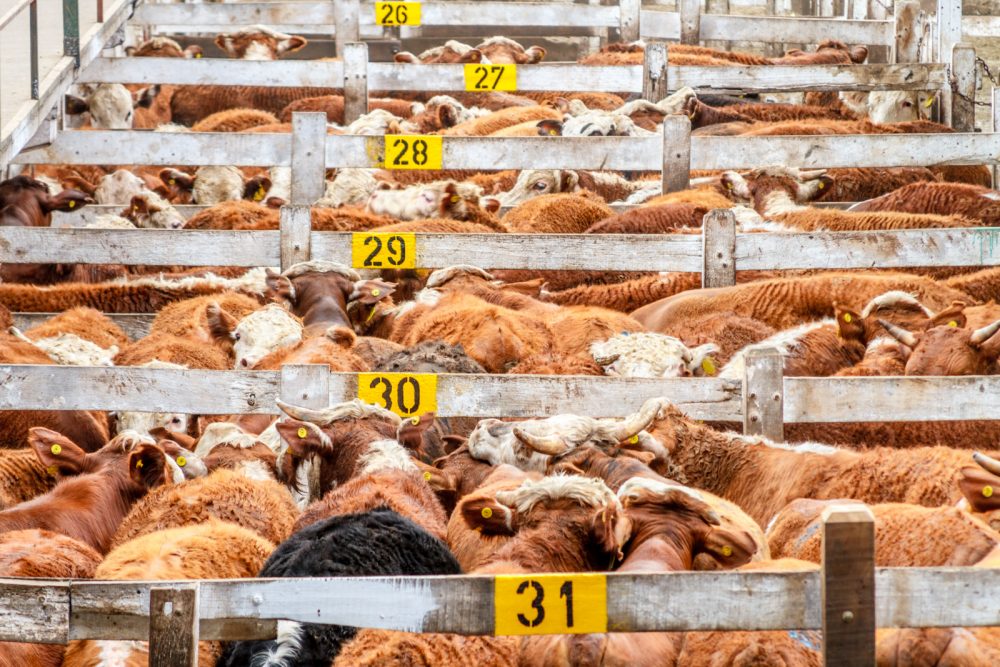
The latest recently developing tragedy–within the last 10 years– with the likes of these untraceable WF steaks is that there is a 90% chance that they were fed DDGs. They’re dry distillers grains, and a by- product of ethanol production. Before the ethanol factory transformed it, DDG used to be corn grown in the corn belt (50% of all that midwestern corn goes into ethanol). After fermentation through the creation of our government sponsored and subsidized ethanol distillery biz, they end up with what is also called “spent grains,” and they are almost ubiquitously fed throughout the animal confinement feeding industry.
It’s because they are cheap. And readily available. I mean really available. Those fuel plants need to move this stuff right now, because in their wet form, they’ll rot in 5 days. And drying is expensive. And there’s ALOT of it: in the US alone, we produce 90,000 tons a week.
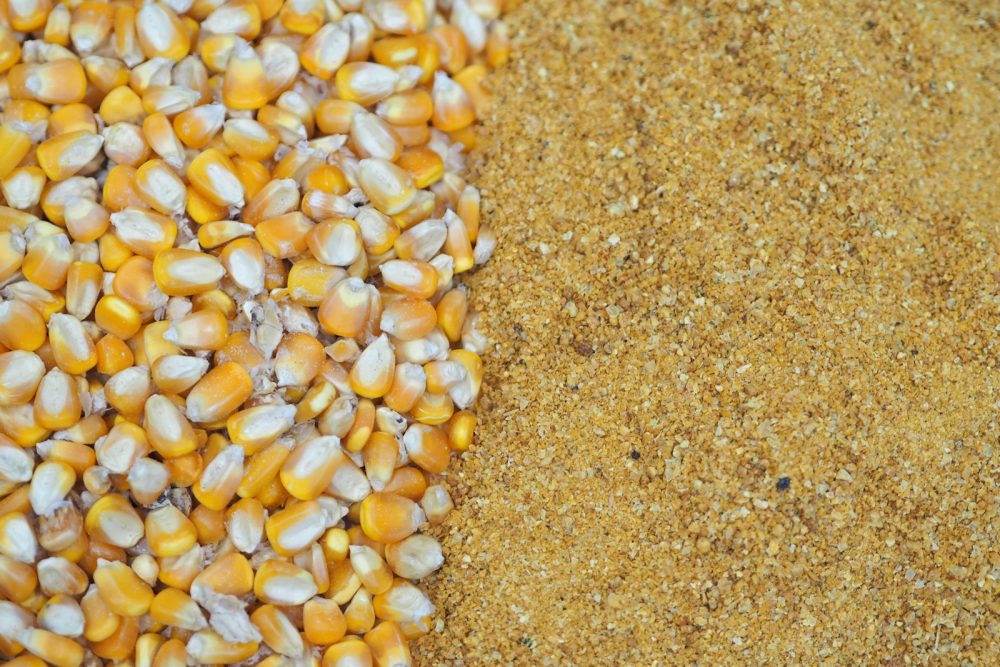
That’s over 500 heaping semi loads a day, if they get dried fully. It’s nearly 2000 semis a day if wet (then called WDGs, or wet distillers grains).
And they are unloaded to the bunks of waiting cows in feedlots after it gets tested to ensure it doesn’t contain lethal levels of sulfur which can cause a condition known as PEM (see sidebar). The resident and DDG recipient of these concrete bunker bound mud and dirt lots are often in the company of an excess of 10,000 head of beef finishing cattle. Or hogs penned by the thousands indoors, or chickens by the millions in sheds.
From Grain News in Canada: Sulphur toxicity in cattle begins when the total intake of sulphur from DDGs and other feed ingredients and sulphates in water exceeds an invisible boundary of 0.4 per cent of cattle’s dry matter feed intake. This level is about three times their natural sulphur requirement for beef cattle of 0.15 per cent and the starting point by which the cow’s rumen fluid literarily becomes polluted with large amounts of dissolved sulfurous compounds.
That’s because the rumen microorganisms cannot convert enough incoming dietary sulphur into the above usable S-containing nutrients. As a result, excessive amounts of hydrogen sulphide gas is produced from incomplete sulfurous rumen fermentation, which is finally belched out by cattle. Since most cattle breathe back this poisonous gas into their lungs, absorbed sulphur dioxide is then transported via the blood and ends up in their brains. It is thought this feedback induces a thiamine deficiency, which leads to a brain disorder or polioencephalomalacia (PEM).
PEM-affected herds may have one or two cattle with visible symptoms of distress, while other animals show no outward clinical signs. Because it is a brain disorder, common symptoms of PEM are: disorientation, staggering in circles, blindness and pressing their head against objects. Other associated signs are respiratory distress and reduced feed intake. Death is common among PEM animals.
“They’re fed free choice,” I’ve heard feedyard owners say. But the only choice the cattle have is to eat or not to eat.
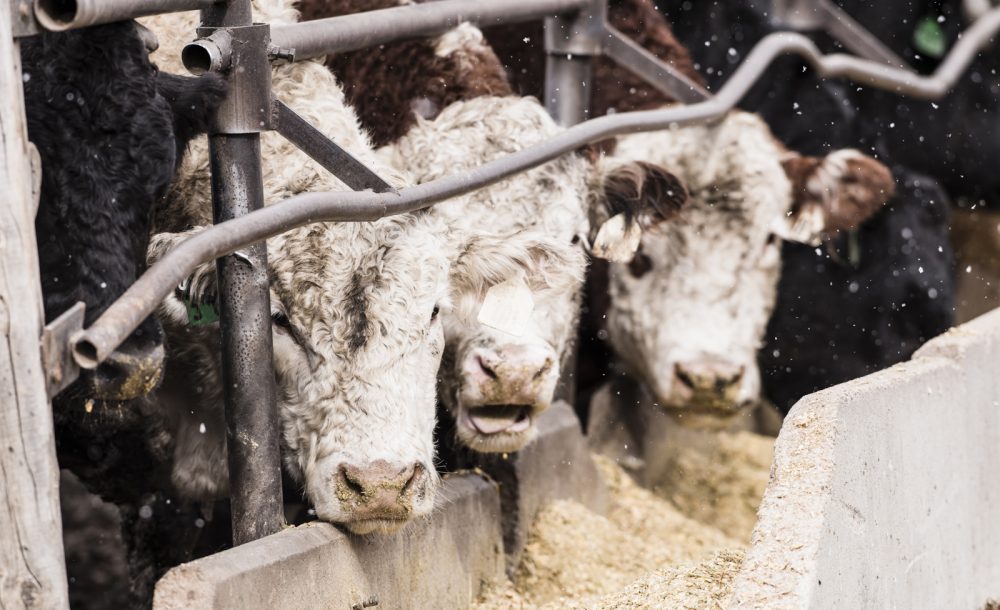
I think we may have lost our moral compass in agriculture.
It’s how the gas pump and the steaks at Whole Foods are connected. Of course, the happy green shirt millennials at WF will not tell you that. For those young people, it’s mostly because of ignorance that there is a lack of transparency behind the meat counter. At the corporate level, however, likely exists a chosen, and quite strategically crafted ignorance.
I asked a friend of mine about it several weeks ago. He was a former longtime WF meat cutter. He used to be head of the department for over 10 years. “Bill (not his real name), I’m sensing that there’s this slippage at Whole Foods. I feel that they are slowly and silently backing away from solid attributes that define food integrity. I even find it in the middle of the store (the boxed and packaged goods area of grocery items). There’s a trend away from organic, local, grass fed, and regenerative, into more mainstream “healthy looking” products, saying things like animal friendly, sustainable or planet safe–that all mean nothing.”
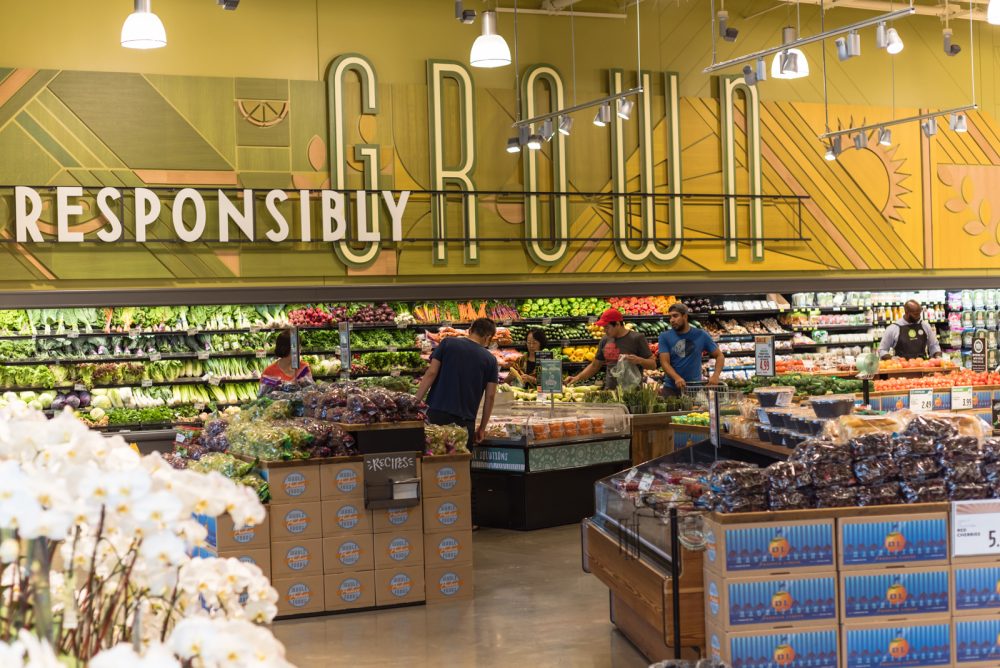
He began to slowly nod in agreement. The usual easygoing smile Bill usually carried with him withered away from his face. “It’s why I left. They started to ask us to do it in the meat department. It just wasn’t what I was about.”
“Yeah. I just feel like they are capitalizing on the trust they’ve built with their consumer base. Longtime shoppers have this expectation that Whole Foods is going to vet the attributes for them. And now, they don’t even carefully read the labels because they have that trust. And Whole Foods charges the same price for those goods as the ones with real attributes, and from that, they create very wide margins.”
Bill nodded, slowly, gravely. He didn’t have words. Bitter, perhaps? I couldn’t blame him.
It’s because they can purchase those items at wholesale for much less than ones with the real attributes–such as local, US born, raised and finished and processed, and organic.
But here’s where the attribute trail gets even more macabre when we talk about animal protein raised on a gasoline additive byproduct that both the ethanol biz and feedlot owners call simply DDGs.
First, the animals don’t fare as well on DDGs as they did on the typical feedlot diet of 10 years ago- generally a simply corn and forage diet. And we all know that the diet of a decade ago wasn’t great. But this is worse. Sulfur toxicity and PEM can result in 1% death loss in the feedlot, even with testing and careful monitoring of the feed. DDG feed can also cause acidosis of the animal’s gut, resulting in mortality or chronic poor performance. Rumenitis, or inflammation of the gut, can also be caused by long term feeding DDGs. Rumenitis often results in ulcers, allowing ruminal bacteria to pass through the rumen wall and into the blood, travel to the liver and cause abscesses. Feeding antibiotics such as tylosin or chlortetracycline has been shown to reduce the incidence of liver abscesses, but antibiotics do not prevent rumenitis and poor performance.
Feedlot life is thankfully a terminal condition. Most animals have exited to their higher calling at a packing plant within 6 months. It is a race to gain to an economically rewarding weight before the animal dies from the implications of their diet.
(Side note: some “grass fed” cattle are fed DDGs, particularly in the winter. In feedlots. Remember, there is nothing legal behind this claim. Know your rancher or farmer!)
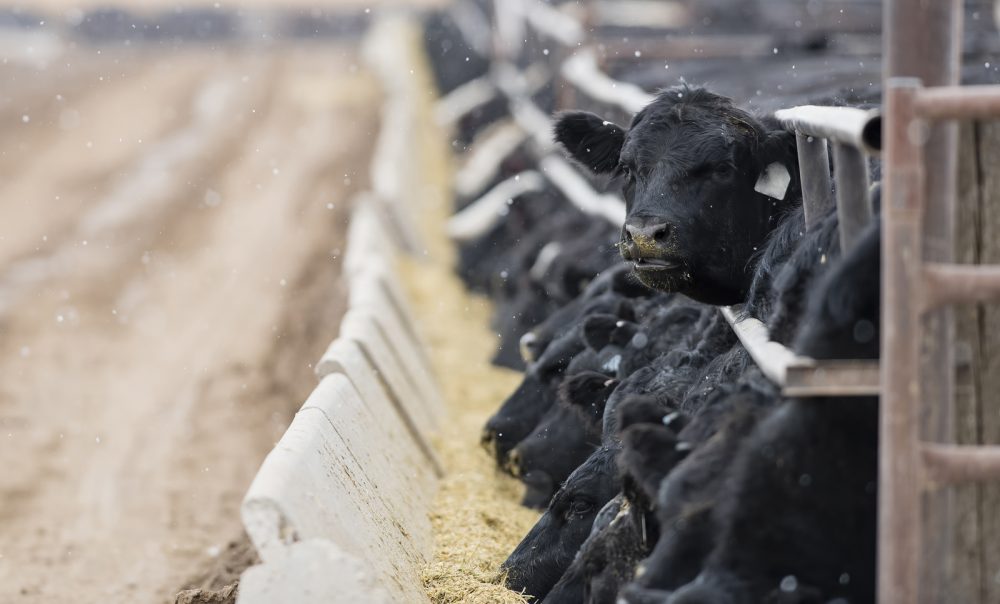
Second, DDG fed cattle are not good for us, the eaters of them. Let’s talk about flavor: blind taste tests of DDG beef fail miserably. Consistent reports use words such as “tasteless” or “objectionable” according to Dr. Allen Williams, former USDA Food Safety and Inspection Service official, and former Professor at both Louisiana Tech and Mississippi State Universities.
It’s why our flavoring and seasoning aisles in grocery stores are bigger than ever. Maybe it’s a good time to purchase stock in BBQ sauce. The way is paved for it to be more needed than ever!
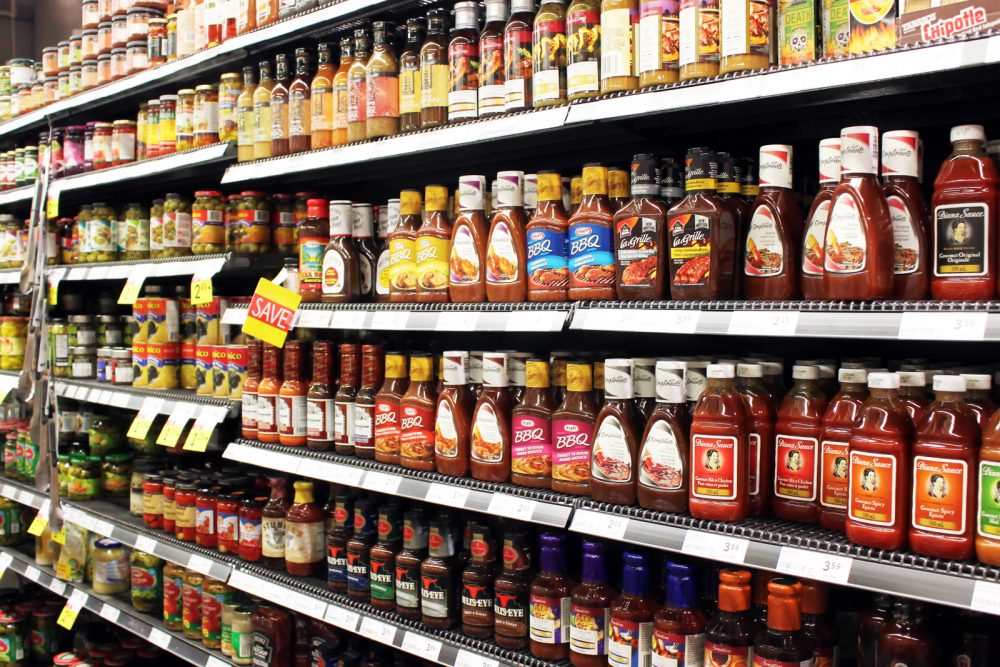
Now, about DDGs and our own wellness.
It is well documented that human serum concentrations of high Omega-6 to Omega-3 fatty acid ratios indicate high levels of inflammation that is a causal mechanism for autoimmune illness and cancer. Omega 6 fatty acids are important for us, mind you. But if concentrations of O6’s are significantly higher than those antioxidant rich (read cancer, or free radical fighting) O3 fatty acids, we are in trouble.
“Ideal serum ratios of Omega-6 to Omega-3 essential fatty acids in humans should be 1:1. It is believed that our paleolithic ancestors commonly maintained these kinds of ratios due to a diet rich in wild animal fats,” says Sara Keough, MS, CNS, LDN (a very busy) clinical nutritionist practicing in Ellicott City, Maryland. “However, after reviewing hundreds upon hundreds of Omega-6/3 test results on my patients over the years, I have yet to see a single patient with a 1:1 ratio! I often have patients that come in with a 15:1 ratio of O6:O3 or higher and this is almost always correlated with high inflammation markers and health issues like autoimmune diseases, digestive disorders, cardiovascular disease, cognitive dysfunction, obesity, etc. While “1:1” is optimal, if I can at least get patients down to a ratio of 3:1 or possibly 2:1 then I typically see improvement in inflammation markers and overall health.”
And therein is why DDGs are so dangerous to humans. They’re a sort of secondhand smoke from an actively dying cow, killed only months before it would have died on its own (and that was “free choice” remember?). DDG beef often packs an extremely high O6:O3 ratio. Dr Williams reports that it can be in excess of 50:1. Corn fed beef levels out around 30:1. Legit grass-fed beef weighs in at under 10:1.
DDG beef is simply poor human nutrition. And it’s relatively ubiquitous in our food supply. It’s in restaurant beef, supermarket beef, and even in Whole Foods beef. It’s even in some sketchy grass fed. Do you think we’ve lost our way yet?
We are what we eat. We are a cow awaiting kill.
Monoculture (one species in a field) agriculture has high environmental costs that I’ve talked about in earlier newsletters. It is associated with habitat loss, topsoil loss, dead zones in oceans, species extinction, and desertification.
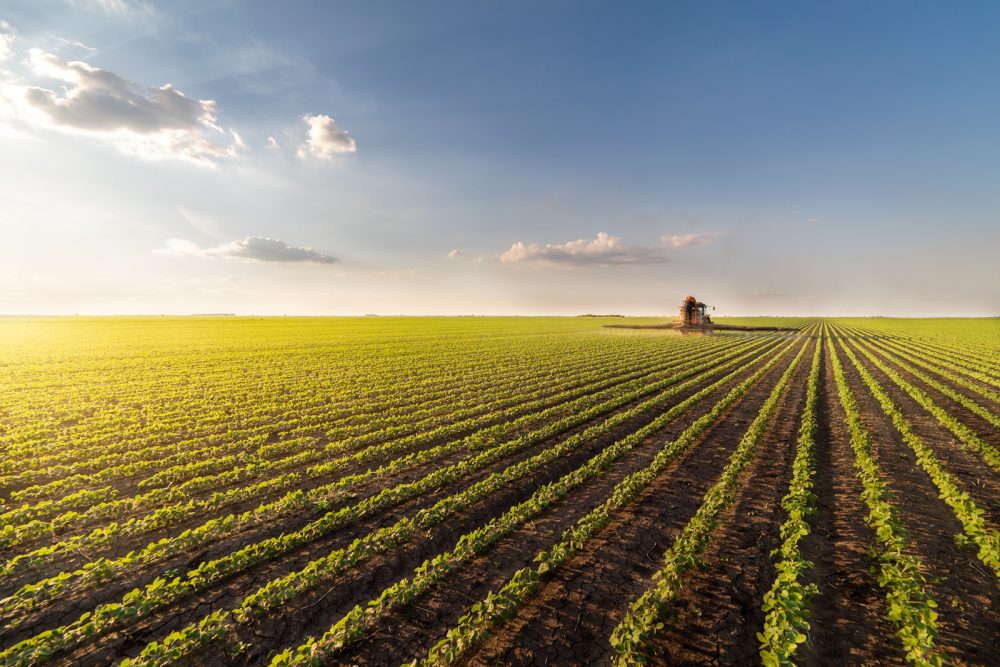
That our feedlot model resides on these monoculture grains is one of the reasons the UN’s 2019 sponsored Eat Lancet report advised that for planetary health (as well as human health) we need to strongly curtail the production and consumption of red meat. Unfortunately, no one is looking at the distant relative of feedlot beef known as pastured protein or truly grass-fed beef.
And the production, feeding, and presentation of DDGs in our food supply is the latest step in the near hopeless worsening of our human…and planetary condition.
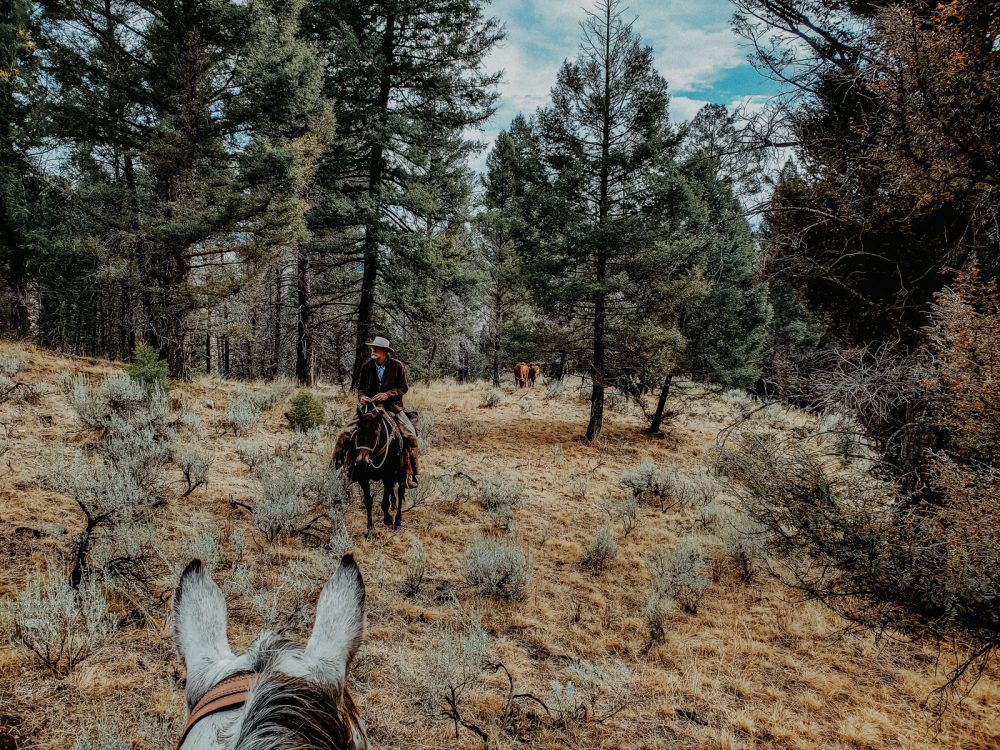
——-Last Summer——-
I’m horseback today, slowly picking my way though and over the occasional down and graying, decaying logs on the forest floor. It’s an open, savannah-like forest. There are sounds around me, besides the typical lute-like call of the wood thrush this warm summer evening.
It’s the congregational sound of content beeves, tearing the long green grass up with their tongues. Their extending and dexterous appendages emanate from their mouths with a precise and well-practiced dance across the grass: wrap and tear. There are humans that mock such animals, considering our human opposing thumbs to give us advantages in dexterity that beats all in the animal kingdom.
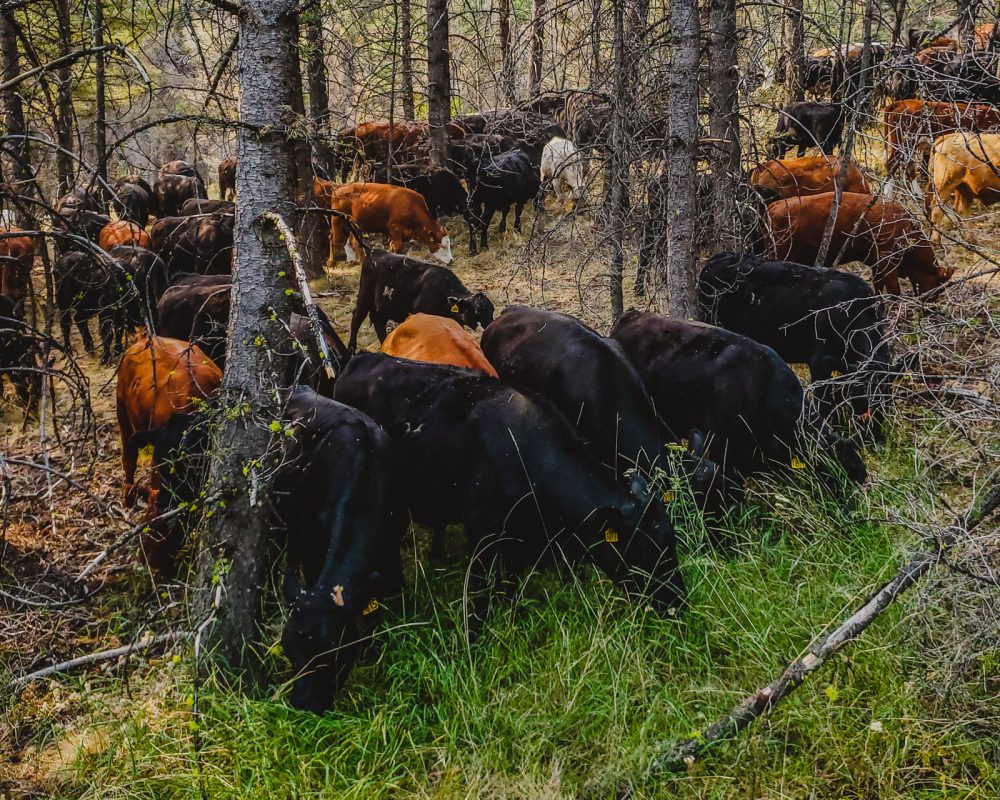
But I would challenge that; no human tongue could even begin to pick its way through this diverse sward of wild grasses. We might not even be able to match such dexterity with our hands! But the cows pull leaves from legumes, pick pinecones, sample sedges, and shred leaves from shrubs. Their dexterity with tongue is akin to elephant with trunk.
They are made for this country and made to graze it. There are 550 grazeable species on this one Rocky Mountain, just one out of a broad cordillera, a backbone of wilderness that spans North America. It is unfarmed, unplowed and contains unique and intact plant communities reminiscent of the time that bison grazed it.
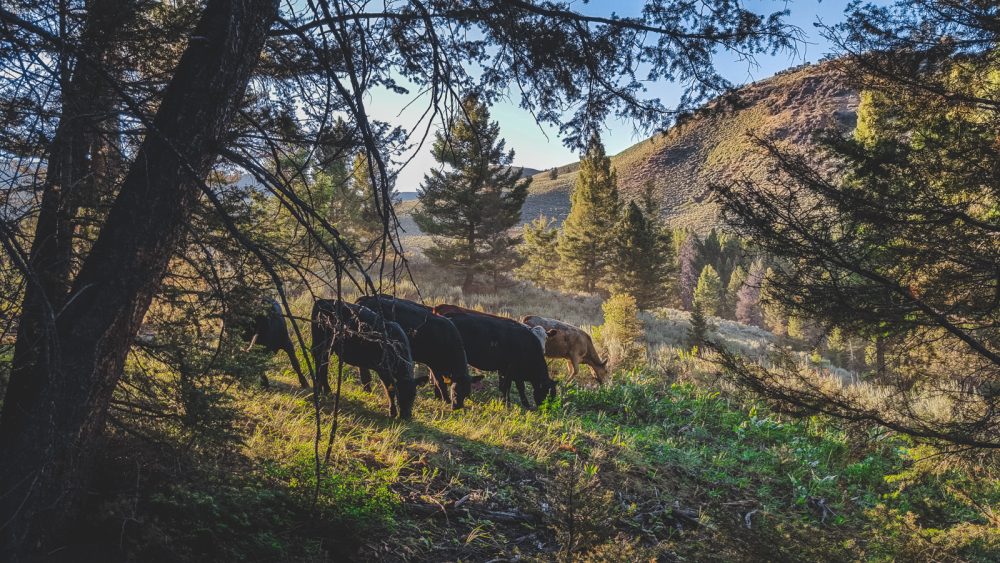
There is no concrete here. There’s no steel prison-like fence. We guide them each day on horseback in the summer to the best grass; the greatest natural, wild diversity.
It’s not the only right way to care for cow. There are many others that also, in their own way of husbandry, let the beeves express their full range of instincts.
And when they do, they maximize the beeves wellness. And ours.
It’s because we offer them a choice. And it’s not a choice to eat or not to eat. But a choice to pick from a cornucopia of goodness–of wild plants. Because when we let them use that tongue to its fullest potential, they’ll use their wild instinct to reach their fullest potential.
And they will choose life, and incredible wellness.
Happy Trails.
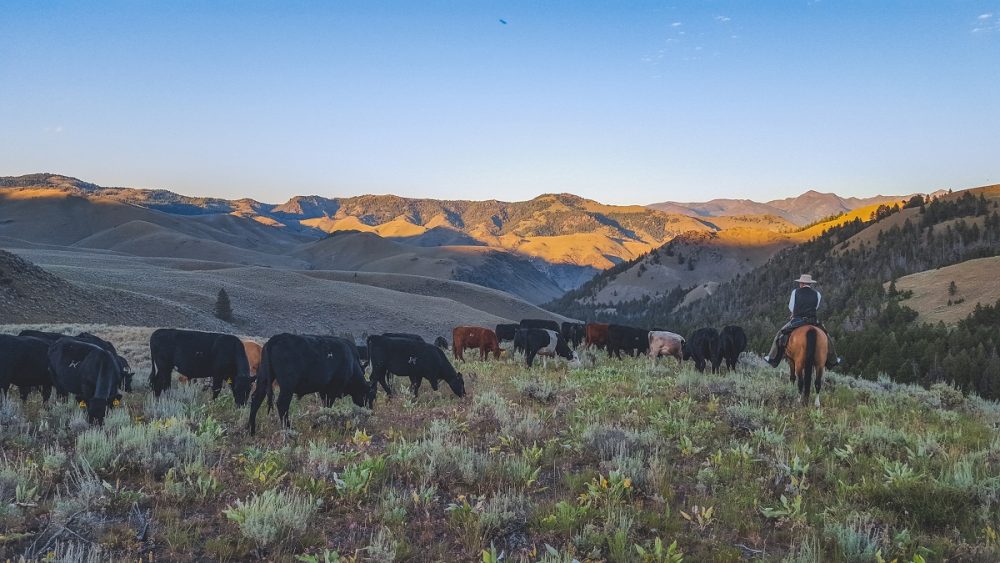

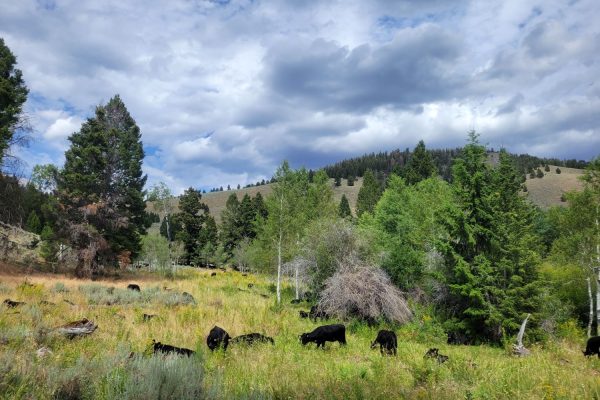

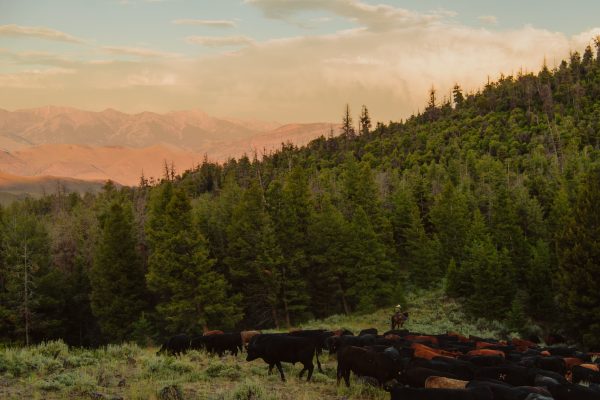
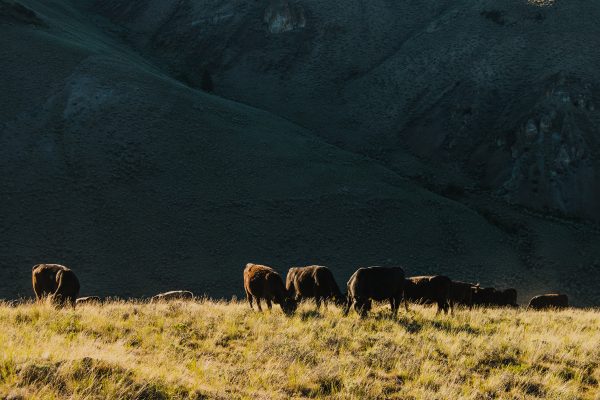


Russ Metz
Thanks for this wonderful article.
Joseph Gunselman
I guess I won’t rely on whole foods on Maui. I will continue to pack my own meats.
CHRIS kingsbury
YOU MIGHT TO MASK OR BLUR YOUR LICENSE PLATE IF YOU TAKE A PHOTO
Caryl Elzinga
Good point, Chris! Changed it!
Haig Boyadjian
Thank you so much for this article!
Michael Headrick
Wow, excellent article, and here I was only worried about the ethanol content in the gas for my Harley!
Carolyn Young
Thanks for your thoughtful article!
Kathleen Aldenbrook
Content-rich, plus you’re a skilled writer. Thank you for both.
I noticed a few years ago that I couldn’t buy a certified organic chicken at Whole Foods. They told me they no longer offer them. I quit shopping WF then.
On a related note–for so many reasons, several of which you address in your article, I make an effort to buy local, independent, from small businesses. I choose NOT to funnel a cut of everything I buy to one man. Shopping at WF and Amazon does exactly that.
Sara Reilly
I concur with the positive comments – your articles are always enlightening, inspiring and beautifully photographed. As I read, a unique and vivid perspective unfolds….
Your reality check on WF is much appreciated and will be shared.
Caryl Elzinga
Sara
Thanks for your thoughts! I’ve seen significant slippage and WFs formerly celebrated attributes of local and ‘whole’ foods. As with many large food purveyors, eventually the truth is exposed by competition: The dollar must rule.
-Glenn
Perry
Wonderful information, and so well written! I’m old chronologically, but relatively young in mind and body thanks in part, I think, because of my decades long zeal to learn and practice healthy eating. I have read Omnivore’s Dilemma, and this article builds nicely upon what I gained from that intriguing presentation. If I were age 20 again I would probably choose a career such as yours or something related, as it impacts the well being of everything: our soil, water, plants, food animals, air, and of course our own health. Nature set up a beautiful system which when ignored almost always leads to some kind of trouble.
Caryl Elzinga
Perry
Omnivore got me thinking a lot about these same issues. I really started digging after I read Pollan’s and others treatises on food–and the origins of it. Unknowingly, I was part of it in conventional ag. Only later did I really how thick the plot had become to compromise our health, albeit largely unintentionally. Perry, I think more than ever it is up to each of us eaters of food to search out the truth of what and how we eat! Thanks for your thoughts!
-Glenn
richard parrott buhlidaho
well said glenn YOU HAD NEW INFO TO ME on distillers grain .. what you say about whole foods sounds true. were you around for wild oats switching to argentine beef and leaving a middleman supplyer 65 head to pay for on his own with no organic market … he was a heart doctor who saw the value of omega 3 and invested his SAVINGS IN FINDING AND MARKETING IT. SAY 25 ?YEARS AGO. pre organic
aldersprings
Caryl Elzinga
Richard
The plot is thicker than we realize. I don’t actually think much of it is intentionally insulting to animal and human health. But that doesn’t mean it isn’t. Conventional ag’s got no reason to care. It really is about the money! Thanks for your thoughts!
-Glenn
Leo Younger
Thanks as always for revealing info we otherwise wouldn’t know. Just now finished reading about polioencephalomalacia (PEM) online. The supermarkets, including Whole Foods, have no food for me. Other than Alderspring, my food is from a farmers market where certified organically grown produce is available from several 100% organic farmers, all of whom I buy from are also Real Organic Project certified. Curiously, a Brave search summary for DDGS follows:”Dried distillers grains with solubles (DDGS) are a nutrient-rich co-product of dry-milled ethanol production.3 They are typically used as a protein-rich animal feed and are sold locally in wet form. For longer distances, DDGs are dried to about 10% moisture to reduce weight.0 DDGS have an almost indefinite shelf life and may be shipped to any market regardless of its proximity to an ethanol plant. Drying is costly, as it requires further energy input.1 Most (98%) of DDGS in North America comes from dry-grind plants that produce ethanol for use in oxygenated gasoline, while the remaining 1 to 2% is produced by the alcohol beverage industry.2 Recently, studies indicate that DDGS as a food source for human consumption may have some benefit in reducing heart disease risk.” Seems like someone thinks DDGS is suitable for humans, too. I guess that the consumers of highly processed substances might not notice DDGS in cookies, flatbread and breakfast cereal, as an article on distillers grains in Wikipedia suggests.